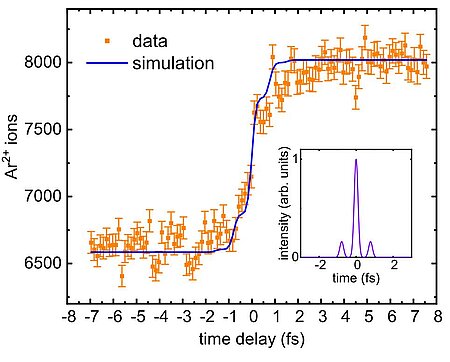The first generation of attosecond pulses (1 attosecond corresponds to 10-18 seconds) at the turn of this century has enabled unprecedented insights into the world of electrons. For their pioneering work first leading to the demonstration of attosecond pulses in 2001, Anne L’Huillier, Pierre Agostini and Ferenc Krausz were awarded with the Nobel Prize in Physics 2023. Current attosecond techniques, however, come with an important drawback: To be able to record a movie in a pump-probe experiment, an attosecond pulse typically has to be combined with a femtosecond pulse (1 femtosecond corresponds to 10-15 seconds) whose optical cycles (a few femtoseconds long) is used as a clock with attosecond resolution. This constitutes a limitation for the investigation of electron dynamics on attosecond timescales.
Ever since the first demonstration of attosecond pulses, it has been the dream of many scientists to perform experiments in which a first attosecond pump pulse initiates electron dynamics in an atom, a molecule, or a solid-state sample, and where a second attosecond probe pulse interrogates the system at different time delays. This goal turned out to be very challenging, because it requires intense attosecond pulses. The underlying process of high-harmonic generation (HHG) is very inefficient though. As a result, only a very few proof-of-principle demonstrations of attosecond-pump attosecond-probe spectroscopy (APAPS) have been reported, which made use of large setups and specialized laser systems operating at low repetition rates (10-120 Hertz).
A team of researchers from the Max Born Institute (MBI) in Berlin has now demonstrated a different approach, allowing them to perform APAPS experiments using a much more compact setup. For this purpose, they used a turn-key driving laser at a kilohertz repetition rate. This resulted in a substantially more stable operation, which is a key requirement for the successful implementation of APAPS. As shown in Fig. 1, the scientists used infrared laser pulses for the generation of attosecond pulses in a gas jet. In contrast to how attosecond pulses are usually generated, however, they came up with the idea to place the gas jet not near the driving laser focus, but at some distance away from it. As a result, attosecond pulses with a relatively high pulse energy and a small virtual source size were generated, which after refocusing enabled the researchers to obtain high-intensity attosecond pulses.

